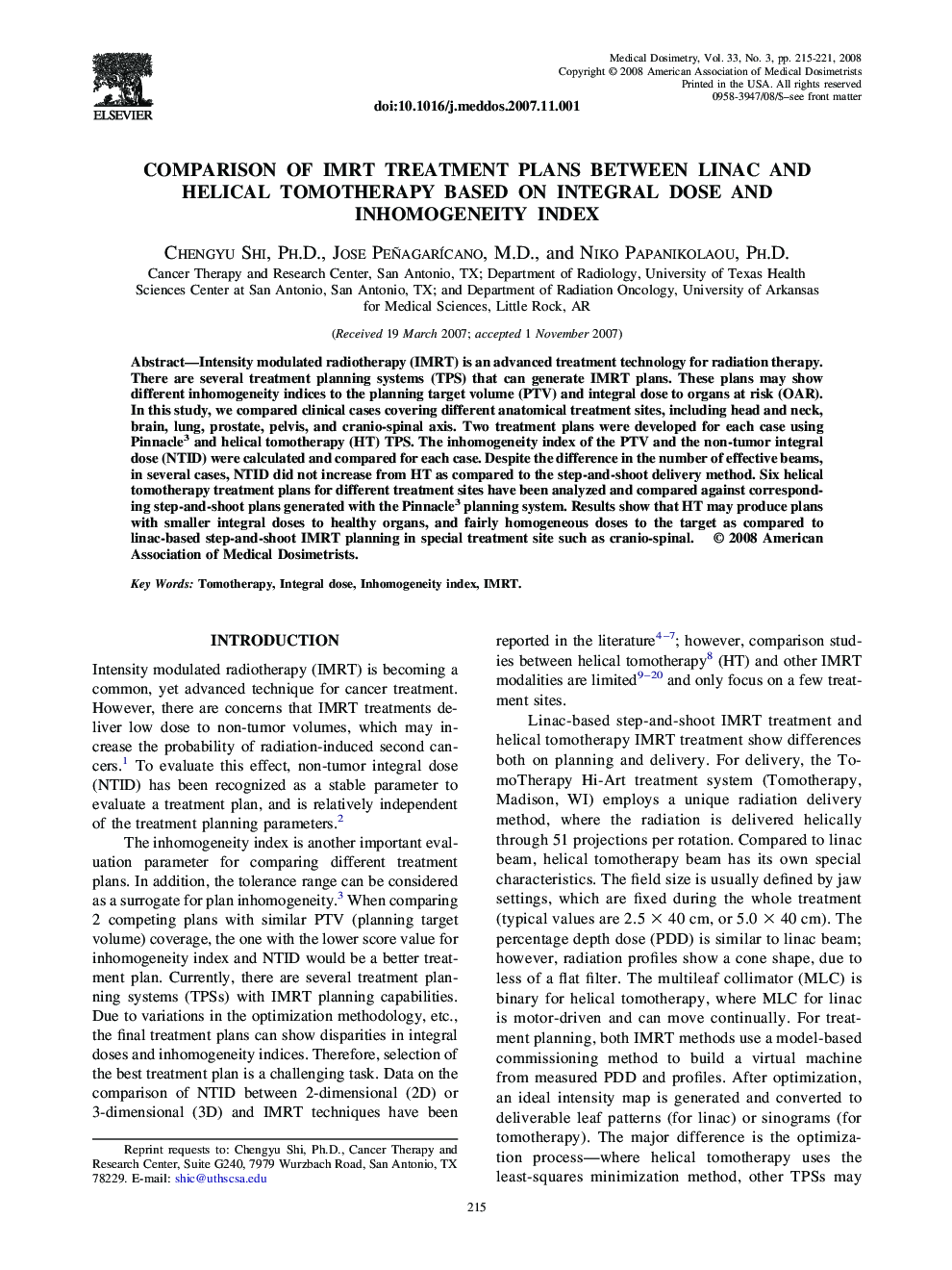| Article ID | Journal | Published Year | Pages | File Type |
|---|---|---|---|---|
| 1885608 | Medical Dosimetry | 2008 | 7 Pages |
Abstract
Intensity modulated radiotherapy (IMRT) is an advanced treatment technology for radiation therapy. There are several treatment planning systems (TPS) that can generate IMRT plans. These plans may show different inhomogeneity indices to the planning target volume (PTV) and integral dose to organs at risk (OAR). In this study, we compared clinical cases covering different anatomical treatment sites, including head and neck, brain, lung, prostate, pelvis, and cranio-spinal axis. Two treatment plans were developed for each case using Pinnacle3 and helical tomotherapy (HT) TPS. The inhomogeneity index of the PTV and the non-tumor integral dose (NTID) were calculated and compared for each case. Despite the difference in the number of effective beams, in several cases, NTID did not increase from HT as compared to the step-and-shoot delivery method. Six helical tomotherapy treatment plans for different treatment sites have been analyzed and compared against corresponding step-and-shoot plans generated with the Pinnacle3 planning system. Results show that HT may produce plans with smaller integral doses to healthy organs, and fairly homogeneous doses to the target as compared to linac-based step-and-shoot IMRT planning in special treatment site such as cranio-spinal.
Keywords
Related Topics
Physical Sciences and Engineering
Physics and Astronomy
Radiation
Authors
Chengyu Ph.D., Jose M.D., Niko Ph.D.,
